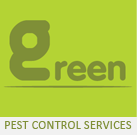Introduction
Pest control is a crucial aspect of maintaining a healthy and comfortable living environment. Whether you’re dealing with ants in the kitchen, rodents in the attic, or mosquitoes in the backyard, pests can be a persistent nuisance. In this comprehensive guide, we’ll explore the world of pest control, from understanding common pests to implementing effective prevention and elimination strategies.
Chapter 1: Identifying Common Pests
To effectively combat pests, you first need to identify them. In this chapter, we’ll discuss some of the most common household pests, including:
1.1. Insects: Ants, cockroaches, bedbugs, and termites. 1.2. Rodents: Mice and rats. 1.3. Flying Insects: Mosquitoes, flies, and wasps. 1.4. Nuisance Wildlife: Squirrels, raccoons, and bats.
Chapter 2: The Importance of Pest Prevention
Prevention is often the best defense against pests. In this chapter, we’ll delve into the importance of pest prevention methods, including:
2.1. Good Hygiene Practices: Keeping a clean and clutter-free home. 2.2. Sealing Entry Points: Identifying and sealing potential entryways for pests. 2.3. Proper Food Storage: Storing food in airtight containers to deter pests. 2.4. Regular Maintenance: Maintaining your property to minimize pest-friendly conditions.
Chapter 3: Natural and Chemical Pest Control Methods
When prevention alone isn’t enough, it’s time to consider pest control methods. This chapter covers various approaches, including:
3.1. Natural Remedies: Using non-toxic substances like diatomaceous earth and essential oils. 3.2. Chemical Treatments: Employing pesticides and insecticides, with safety precautions. 3.3. Integrated Pest Management (IPM): Combining multiple strategies for long-term control.
Chapter 4: Professional Pest Control Services
Sometimes, pest infestations require professional intervention. In this chapter, we explore when it’s time to call in the experts and what to expect from professional pest control services, such as:
4.1. Inspection and Assessment: Thoroughly assessing the extent of the infestation. 4.2. Treatment Plans: Tailoring treatment strategies to the specific pest problem. 4.3. Regular Maintenance: Implementing ongoing pest management solutions.
Chapter 5: Eco-Friendly Pest Control
As environmental concerns grow, many homeowners seek eco-friendly pest control alternatives. This chapter highlights sustainable and environmentally responsible approaches to pest management:
5.1. Biological Control: Introducing natural predators to control pest populations. 5.2. Organic Pesticides: Using eco-friendly, plant-based solutions. 5.3. Habitat Modification: Altering your surroundings to deter pests without harming the environment.
Chapter 6: Pest Control in Gardens and Landscapes
Pests can also wreak havoc on your outdoor spaces. In this chapter, we’ll discuss how to protect your garden and landscape from unwanted critters:
6.1. Companion Planting: Using plant combinations to deter pests. 6.2. Physical Barriers: Installing fences, netting, and traps to protect your plants. 6.3. Organic Garden Practices: Promoting a healthy garden ecosystem to reduce pest issues.
Conclusion
Pest control is a multifaceted challenge, but with the right knowledge and strategies, you can effectively manage and eliminate unwanted guests in your home and garden. Whether you opt for preventive measures, natural remedies, or professional services, the key is to address pest issues promptly to maintain a safe and comfortable living environment. By implementing the methods discussed in this guide, you’ll be well-equipped to tackle any pest problem that comes your way.
